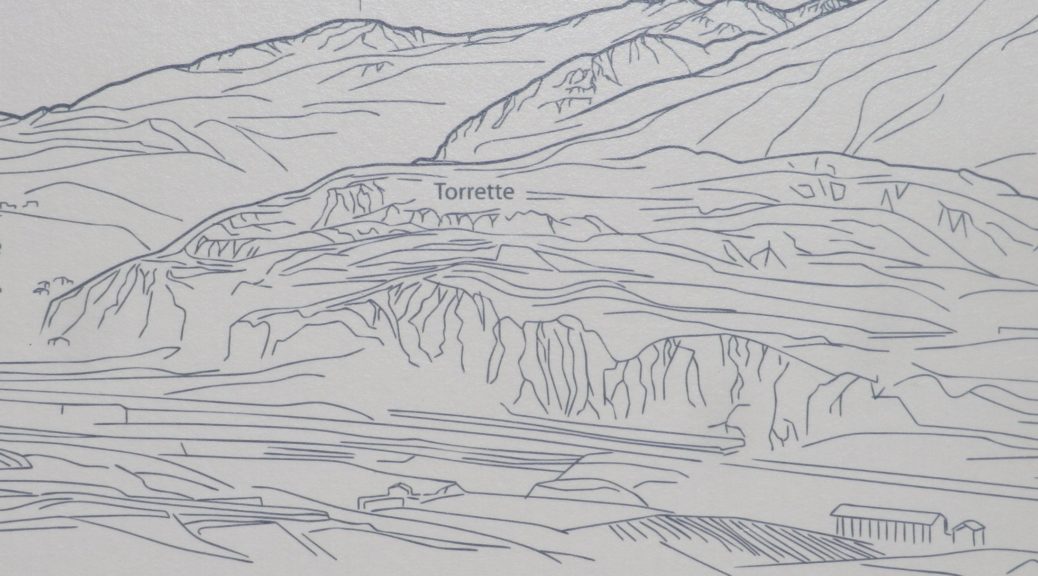What I Learned:
Valle d’Aosta (Aosta Valley) is in the northwest corner of Italy, where Italy, France and Franco-phone Switzerland meet. It is an autonomous region with a heavy French influence. This influence, and of course earlier Roman settlement in the region, means that wine and wine production figure heavily in local culture. Being not only in the north, but also at a rather high elevation, wine-making is a challenge. But it is one that local winemakers have accepted, especially those vintners close to the French border, whose vineyards lie at altitudes greater than 1000 meters above sea level. (In fact, these vineyards lying below the highest mountain in the Alps, Mount Blanc (itself over 4800 meters above sea level), include some of the highest vineyards in Europe.) While there are other contenders for the highest vineyard elsewhere in Europe, there can be no doubt that Aosta Valley winemakers work in seriously mountainous terroir.
While winemaking in such mountainous terrain is not commonplace, it is hardly unique. What is unique however may be found in the high number of native grape varieties. Both red and white varietals grow here, and thrive in the local conditions. The paragraphs below list some of the varietals, both red and white, that are native to the Aosta Valley.
The red varietal Fumin is widely cultivated throughout the central part of the Aosta Valley. Judging from the variety of Fumin Aosta DOC wines on offer, this grape produces a popular varietal wine. Cornalin is another local red varietal, which also produces an Aosta DOC varietal wine. Just over the mountains in the Swiss canton of Valais, the same grape is called Humagne Rouge. Italian vintners cultivate this varietal much less extensively than their Swiss counterparts though.
However, the most widely cultivated local varietal is the Petit Rouge in the Aosta Valley. Second place in terms of hectares cultivated goes to the Vien de Nus, a varietal named after its alleged place of origin. A minimum of 70% of Petit Rouge must be present in the Aosta DOC red wine, Torrette, a delicious red wine cuvee. Vien de Nus may be added to a Torrette cuvee, but it is never vinified as a varietal wine.
The early maturing Mayolet, almost extinct a couple of decades ago, has been rediscovered. It may be vinified as a varietal wine, a rare find, or may be added to the Torrette DOC blend.
In contrast, there is only one white varietal native to the valley. The Prie Blanc, also known as the Blanc de Morgex, is capable of maturing in some of the most elevated Valdostan vineyards. It is, as it would have to be, resistant to frosts and cold. Planted in some of the highest vineyards in Italy, it is not unusual to find that vintners make sparkling and sweet wines with this grape, although varietal wines are also produced.
What I Tasted:
2015 Fumin Barrique, Valle d’Aoste Denominazione di Origine Controllata, Cave des Onze Communes (Aymavilles): A dry red wine with dark ruby color; nose of spice, smoke and oak, with vanilla, dried cherry and red berry flavors; high tannins, with a smooth finish.
2015 Torrette Superieur, Valle d’Aoste Denominazione di Origine Controllata, Cave des Onze Communes (Aymavilles): A dry red wine blend (Petit Rouge 80%, Fumin 10-15%, Mayolet and Cornalin 5-10%) with dark garnet color; dried red berry nose, with dried red berry, blackberry, oak and vanilla flavors; medium tannins and a long, smooth finish.
2014 Petite Arvine, Valle d’Aoste Denominazione di Origine Controllata, Feudo di Maurizio (Serre): A dry white wine with medium gold color; mineral nose, with spice, wood, honey and spice flavors; medium acidity.
Blanc Fripon, Valle d’Aoste Denominazione di Origine Controllata, Quatre Mille Metres (Chambave) with Cave Mont Blanc de Morgex et La Salle (Morgex): A dry, spumante white wine (Prie Blanc 65%, Mueller Thurgau 35%) rather still, with a light gold color; floral and fruity nose, with floral and sweet apple flavors; medium acidity.
